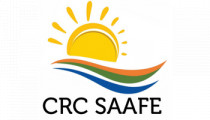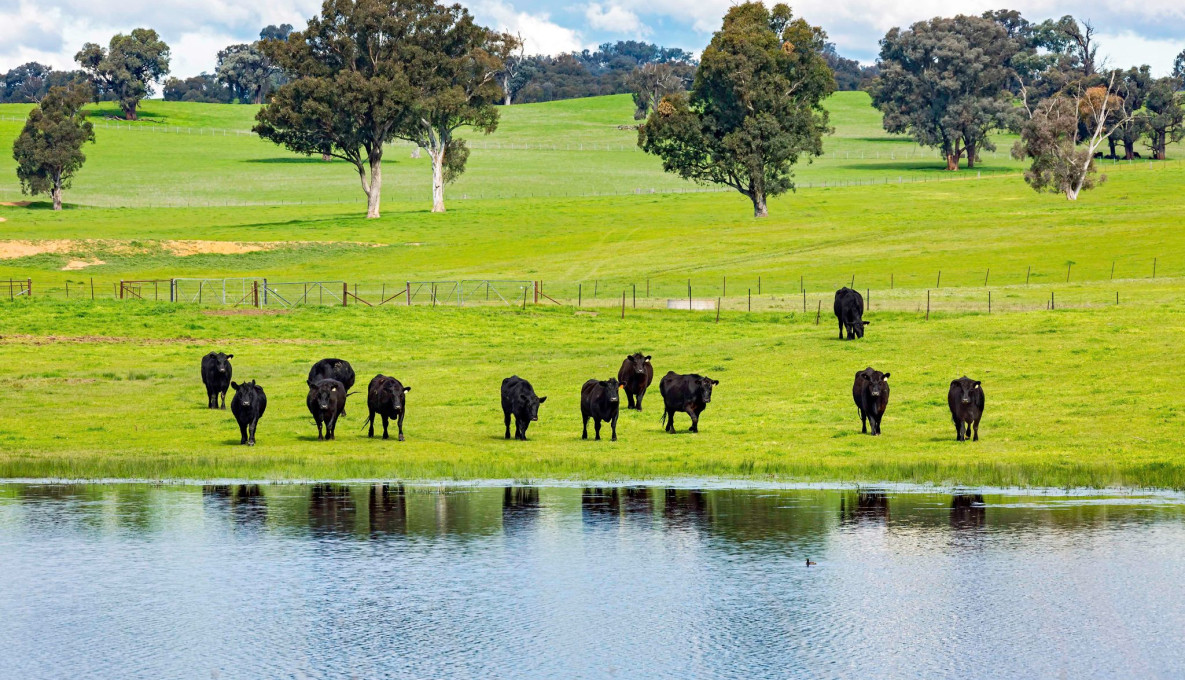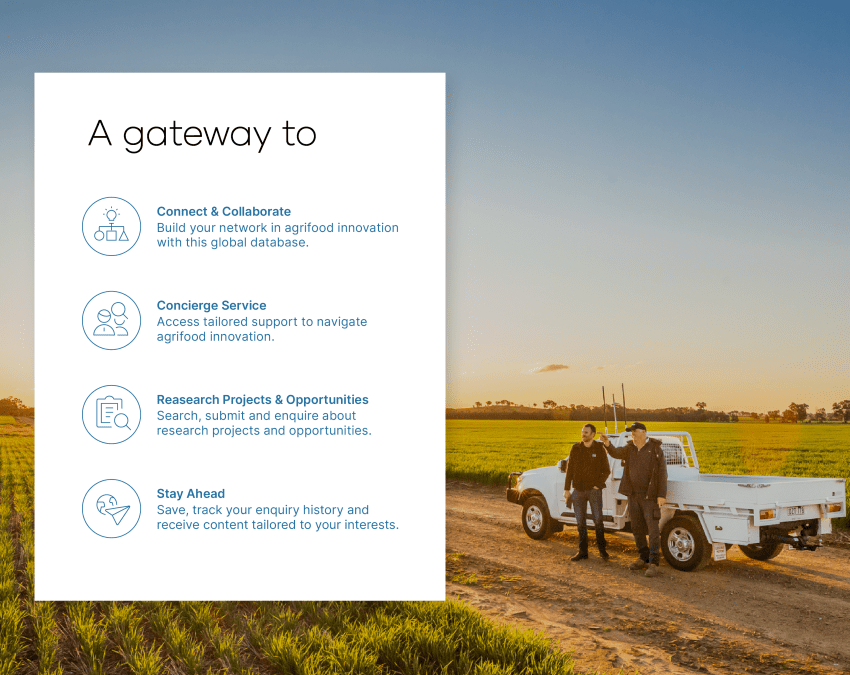
CRC Round 23 bids putting an Australian lens over global ag challenges
From antimicrobial resistance to improved climate and water risk management, one thing is clear: industry-led collaboration is key to solving some of our biggest challenges.

2021 ended on a high for two commercial opportunities featured on growAG. with news they had progressed to Stage 2 of the Round 23 Cooperative Research Centre (CRC) grants program. Tackling problems as big as they come, the Cooperative Research Centre for Solving Antimicrobial Resistance in Agribusiness, Food and Environments (CRC SAAFE) and ONE Basin Cooperative Research Centre (ONE Basin CRC) showcase the strength of – and appetite for – industry-led collaborative research within Australia’s ag sector.
A stalwart of Australia’s innovation ecosystem, the CRC Program funds medium to long-term collaborations – up to ten-year terms – between industry, researchers and end users that improve the competitiveness, productivity and sustainability of Australian industries – from agriculture and manufacturing to mining and healthcare.
Related organisations

-contain-250x120.jpg)
Since its inception in 1990, the CRC Program has been an eminent feature of Australia’s innovation ecosystem, with 409 industry-led collaborations attracting more than $5.3 billion in Australian Government funding, and a further $16.4 billion in cash and in-kind contributions from industry and research partners.
In an innovation policy landscape characterised by constant change, the CRC Program has provided a much-needed anchor point. Jane O’Dwyer, CEO of advocacy group Cooperative Research Australia, explained, “There's not a lot of predictability in the innovation policy landscape. Funding programs come and go. They evolve. They cease when governments or ministers change. But the CRCs have been a predictable, known and understood part of that landscape for a long time. Everybody who goes in to participate understands how it will work and what to expect. There’s real value in that certainty.”
RELATED: The new mindset driving Australian agrifood research
-width-1680.png)
All hands-on deck approach to addressing antimicrobial resistance
CRC SAAFE’s bid aims to tackle one of the most urgent threats to global health, food security and economic prosperity – the growing antimicrobial resistance (AMR) that is challenging our ability to treat infectious bacteria, viruses, fungi and parasites. CRC SAAFE proposes to coordinate a multi-sector, ‘One Health’ response, that brings key players together to solve a problem that touches so many aspects of our lives.
Interim CEO, Professor Erica Donner, explained, “The CRC SAAFE consortium is comprised of more than 40 partners representing end users, technology and service providers, utilities, standards bodies, regulators and government agencies. We are actively engaging additional end-user partners from across multiple food and agribusiness sectors to consolidate the cross-sector consortium.”
She continued, “Through focused innovation, CRC SAAFE will assist partners to research, develop, commercialise and apply game-changing technologies to monitor AMR risks, apply cost-effective solutions, and make more informed decisions. The CRC will help mitigate AMR risks and provide quality assurance to secure market access advantage for Australian food and agribusiness products.”
Connecting communities, industry and researchers to manage climate and water risks
“We can think of the CRC as the sandpit where everyone gets to know each other, and learns how to work together,” said Jane. It’s a metaphor which Professor Mike Stewardson, lead of the ONE Basin CRC bid, understands.
ONE Basin CRC brings together 87 partners with the goal of overcoming barriers to managing climate and water risks in the Murray-Darling Basin. Those partners encompass the breadth of the irrigation ecosystem: from government, research, and natural resource management to agribusiness, service providers and First Nations representatives.
Mike explained, “When you’re looking at the whole Murray Darling Basin and the number of sectors that we want to touch, it’s an inevitability that we need many partners. But we’re really focused on establishing a strong, collaborative and engaged culture – so everybody has a voice in the decision making, and can participate in the benefits of the CRC.”
RELATED: Global collaboration needed to drive Australian agrifood innovation

Evolution shifts focus to transformative outcomes
In the decades since the first CRCs were formed, the program has naturally seen some changes.
Jane explained, “Over time, the CRCs have evolved to have a stronger focus on facilitating industry leadership and commercialisation outcomes that can create or transform industries, and deliver long-lasting social, economic and environmental benefits to the Australian community.”
Unsurprisingly, given the critical role government funding plays in their operation, CRCs often emerge in response to the government’s national priorities – with clusters coalescing around particular industries or challenges. Right now, that means clusters around energy futures and transitioning industry to manage the challenges that climate change presents.
RELATED: The Leaf Protein Co unlocks Earth’s most abundant plant protein
But Jane believes the bids themselves reveal a lot about Australia’s capacity – and appetite – for innovation. “The bids are very substantial processes. They require a great deal of work and collaboration between the partners to figure out what it is that the CRC will do, what problems it will solve, and what changes it will make to industry. They might take two or three years to develop and can go through multiple rounds before they're successful. But because of that substantial amount of work, the bids end up telling us something really interesting about Australia’s potential: where there's a match of research capacity, industry interest and industry ambition.”
Jane continued, “Not every bid gets funded, but each one shows us an area where Australia has real potential; that there is something worth exploring.”

Boosting the profile – and impact – of cooperative research
Like the CRC model, Cooperative Research Australia has undergone an evolution of its own. Jane explained, “We've been around for 27 years, and naturally evolved over time. But the most recent evolution is in changing our name from Cooperative Research Centres Association to Cooperative Research Australia.”
The name change is not just cosmetic. It’s about welcoming new people into the tent to accelerate the development of cooperative research as a discipline, and shape Australia’s future innovation leaders.
RELATED: Smart Paddock: A better solution for a broader sector
“The program has a long history,” said Jane. “So there are now many post-CRCs that continue the work of the CRC – as institutes and companies. There's enormous depth of knowledge in those organisations, about how to make innovation work and how to transform industry sectors.”
Jane continued, “When we add in the thousands of people who’ve worked with and in the CRCs, we’ve got huge capacity for understanding how to navigate between research institutions and industry.”
“Our role [at Cooperative Research Australia] is to bring that network together to share and harness that knowledge to drive innovation, promote the advantages this remarkable program has delivered to the country, and enable policymakers to consider the lessons we can learn from decades of history.”
RELATED: Investing for impact for Australia’s red meat sector
“It's a consistent public policy question for decision-makers: how do we make Australian innovation stronger and better, and the translation [of impact] better. We often look to other systems and countries, but I see a real opportunity to look to the CRCs – to what I consider has been a real bright spark in Australia's history of innovation programs.”
Want to get involved? ONE Basin CRC and CRC SAAFE are actively seeking additional investors to join their second stage bid. Becoming a partner provides the opportunity to gain access to research expertise, collaborate with leading universities and researchers including contributing to the prioritisation of key research projects.
The outcomes of CRC Round 23 will be announced in May 2022.
-crop-850x675.png)
Looking for engagement?
Showcase your commercialisation opportunity today.
Talk to our team to discuss how growAG. can connect your innovation to industry.
Have questions? Find answers to our most frequently asked questions on research projects, commercial opportunities, organisations and more.
